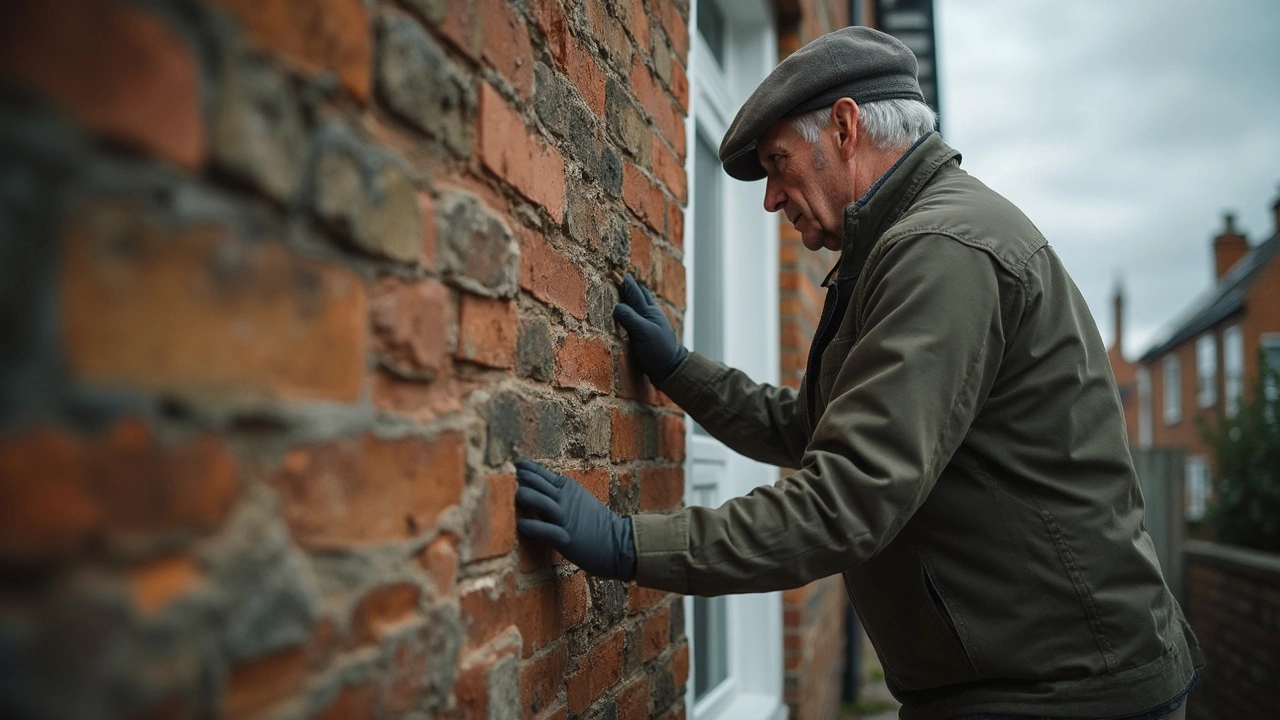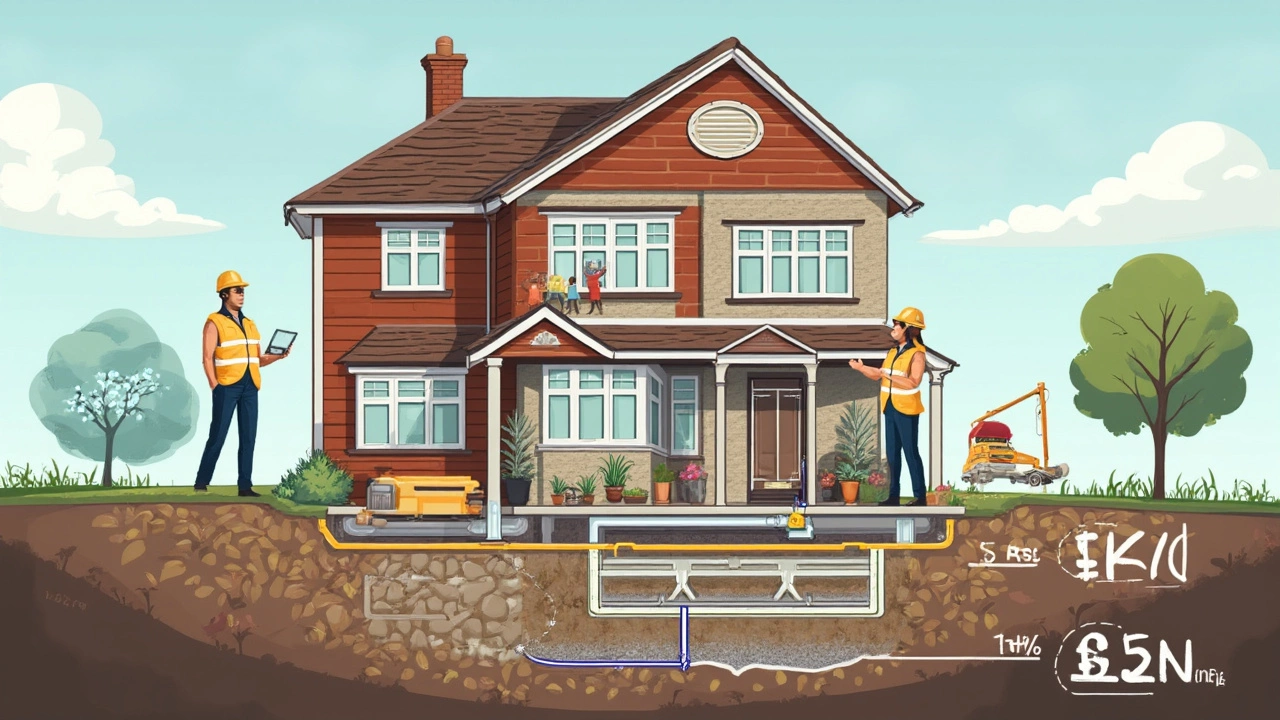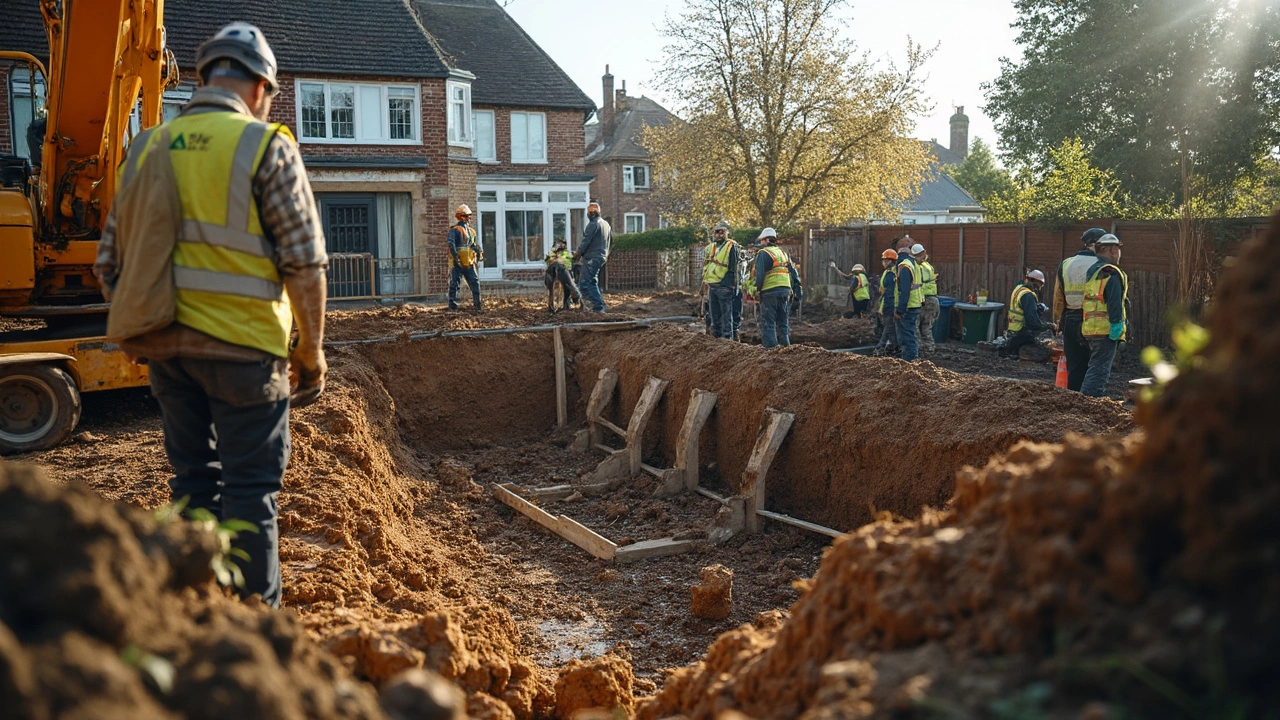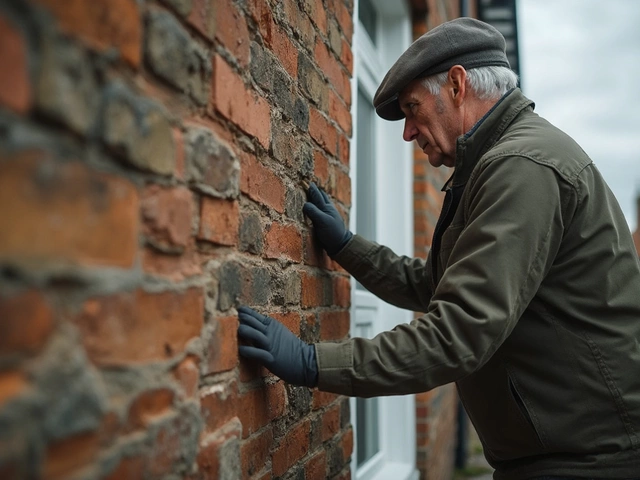Major Foundation Repair Explained: What Qualifies and What to Expect

Picture this: You’re walking into your living room and notice a new crack slicing across the ceiling. Or maybe a door that’s always swung shut now won’t budge. Most people’s first thought? That can’t be good. But here’s the real kicker: not all foundation problems are dire, but when they are, they will hit your wallet—and your peace of mind—hard. Understanding what counts as major foundation repair is the difference between patching a small problem and facing a massive project that eats into your savings, disrupts your life, and could even put your home’s value at risk. The truth is, there’s a whole lot of confusion out there. Let’s yank back the curtain and see what’s really involved when it comes to the big, expensive side of foundation repair.
The Anatomy of Major Foundation Problems
What exactly makes a foundation repair 'major'? It isn’t just about cracks getting longer or a few uneven spots on the floor. When we’re talking serious business, we’re dealing with the structural heart of the house—anything that endangers the main support, threatens the building’s integrity, or demands heavy-duty intervention qualifies as major.
The most tell-tale sign is movement—a part of the home literally shifting or settling. If your floors tilt, walls bow out, or doors and windows suddenly don’t fit right, it’s likely something big is going on underneath. According to the National Association of Home Builders, just 2% of homes will ever experience significant foundation failure. But when it happens, it’s usually after years of subtle signs: diagonal cracks wider than a quarter inch (especially near corners of doors and windows), floors separating from walls, water pooling around the foundation, or basements that feel damp months after the rain stops.
So how do experts decide something’s a 'major' repair? They look at depth, location, and progression of damage. Here’s the cheat sheet:
- Cracks wider than 1/2 inch or those that keep expanding
- Foundations sinking more than two inches
- Pier-and-beam footings that are rotting or crushed
- Slab foundations with heaves (upward buckling)
- Signs of imminent collapse, like bowing basement walls
One strange fact: some homes have actually survived for years with visible cracks, while others with barely visible damage have been unsafe from day one. This is why having a pro check your foundation every few years is smart—just ask the American Society of Civil Engineers, who say that most problems are caught too late, making repairs more disruptive and expensive.
I’ve talked to homeowners who tried to fix major issues with DIY epoxy kits, and trust me—those surface fixes are like putting a Band-Aid on a broken bone. Major repairs demand specialized equipment, crews with heavy machinery, and weeks (not hours) of work. This isn’t something to gamble with. Hiring a certified structural engineer to assess the problem, rather than just a contractor, often saves money and additional headaches down the line because they can pinpoint root causes—not just obvious symptoms.

Types of Major Foundation Repairs and What to Expect
Let’s get real about what’s involved. The scale of major foundation repair often surprises even the most prepared homeowners. The basics often fall into a few categories: underpinning, piering, slabjacking, and wall stabilization. Each has its place, and none come cheap or easy.
Underpinning is the heavy hitter—the process of digging deep below your home to add extra support. Crews will excavate under footings and use new—or replace old—concrete piers to stabilize or even lift your house back to its original position. Each pier can cost between $1,500 and $2,500, and most major repairs require at least 8 to 10 piers. Insert a bill for $20,000 to $40,000 right there. According to a 2024 report from HomeAdvisor, the average homeowner spends $17,000 on major structural foundation fixes, but cases with severe sinking can climb to $100,000 or more if multiple walls or large footprints are involved.
Piering comes in several flavors. There’s push piers (which are hydraulically pushed into the ground) and helical piers (screwed into the ground like giant corkscrews). The right method depends on your soil—loose, clay-rich soils shift the most and typically require more reinforcement. Many repairs also rely on slabjacking, where holes are drilled into the slab and a slurry or foam is pumped underneath to lift sagging floors. It sounds simple—but getting the angle wrong can literally snap pipes or cause new cracks to appear overnight.
Wall stabilization comes into play when basement walls bow or lean due to soil pressure. The most permanent fix uses steel I-beams anchored into your home’s framing or exterior soil anchors set out in the yard. According to a 2023 survey by the Foundation Contractors Association, about 15% of major residential repair jobs in the US involved wall stabilization, always costing more for finished or partially finished basements.
But costs aren’t the only shock. Major repairs mean mess: you’ll have noise, dust, and sometimes your yard or driveway torn up. Inside, you might have to move out temporarily if floors or plumbing are disrupted. Water and electrical lines often need rerouting or protection. Another curveball—permits. Local ordinances in cities like Dallas, Houston, and St. Louis require inspections and paperwork before, during, and after repairs. Miss a step and you could face delays or fines. I’ve seen projects grind to a halt for weeks just waiting on local inspectors to sign off.
Wondering how long this all takes? Major projects usually run from two to six weeks. Weather can stretch these timelines. A rainy stretch can fill holes with water overnight, making progress impossible. If you’re planning a major repair, prepping your yard and making alternate living plans for a while is just plain smart.
Check out this quick data snapshot for what homeowners have faced recently:
| Repair Type | Average Cost (USD) | Average Timeframe |
|---|---|---|
| Underpinning (10 piers) | $25,000 | 4-6 weeks |
| Wall Stabilization (steel beams) | $13,000 | 2-3 weeks |
| Slabjacking (full slab) | $10,000 | 1-2 weeks |
| Pier & Beam Repair | $18,000 | 2-4 weeks |
Insurance almost never covers these repairs unless you can prove a covered event caused it, like an earthquake or flood with specific endorsements. Saving for future repairs or budgeting for inspections is just part of home ownership when foundation issues are a risk in your region.

When to Call in the Experts (and How to Protect Your Investment)
The sooner you spot warning signs, the less likely you are to need those wallet-busting repairs. If you see fresh cracks wider than a pencil, doors that no longer fit their frames, or gaps forming between walls and ceilings, don’t wait. Take time-stamped photos and jot down any changes you see. Movement over weeks or months is a red flag—call an inspector right away if you notice progression.
Not all inspection companies are created equal. Aim for firms with engineers, not just sales reps—some outfits send employees who are paid by commission to sell you a repair, even if it’s not needed. Ask neighbors or check online reviews. Many established contractors will give free or low-cost consultations, but paying an independent structural engineer (typically $500-$1,000 for a full report) buys you unbiased advice.
There are also things you can do to avoid ever needing a major repair. Here are some practical tips:
- Keep gutters clean and extend downspouts at least 6 feet away from your foundation.
- Grade soil around the house so water flows away from the walls.
- Fix plumbing leaks immediately; water under the house is a recipe for foundation trouble.
- Never plant large trees or shrubs within 10 feet of the foundation, since roots and shifting soil make cracks more likely.
- Get a foundation inspection every 5 years, or sooner if you notice suspicious changes.
If you’re buying an older home, always budget for an engineer’s report before closing. Sellers might not even realize there's a problem, or worse, might have hidden previous repairs. Transparency could save you tens of thousands. When interviewing repair contractors, ask for photos of prior jobs and call their references— reputable firms expect this level of scrutiny.
One last tip: after a major repair, ask for a transferable warranty if you sell the home. Quality work will often carry a 10- to 25-year guarantee—and savvy buyers look for homes with rock-solid foundations. Just remember, even the best repairs won’t hold if the root causes—drainage, soil movement, underground water—aren’t addressed at the same time.
